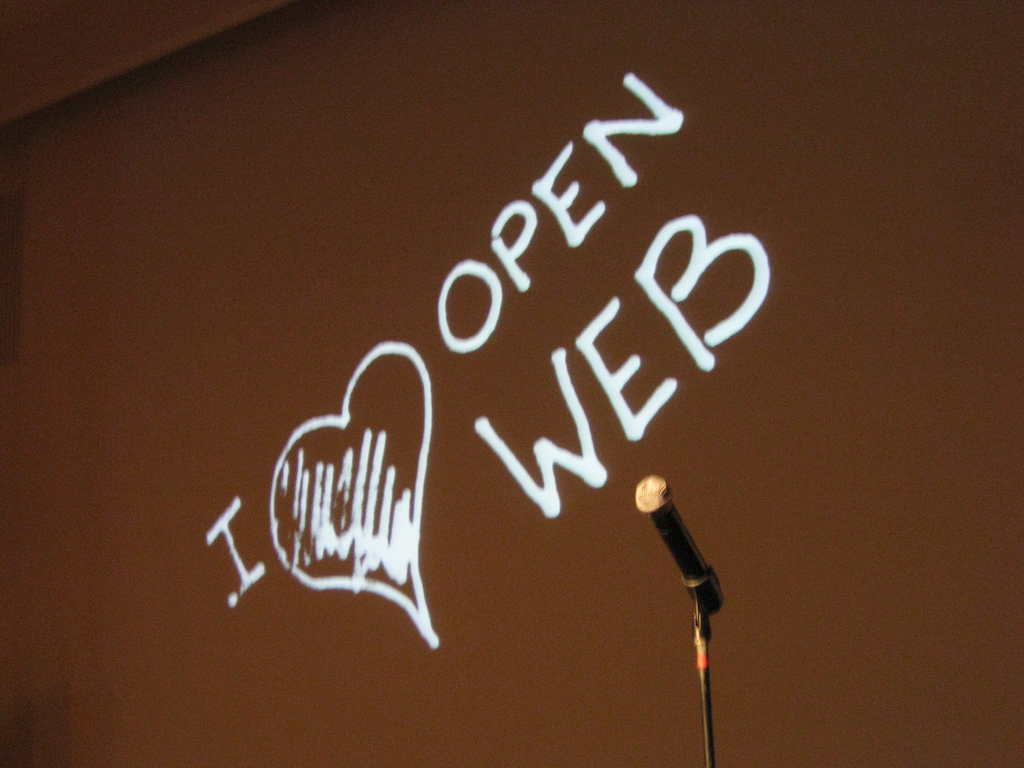With Apple and Microsoft committed to one side, and Mozilla and Google committed to another, are consumers stuck in the middle again?
A few years ago, in the battle between two standards for high-def video, one format seemed superior and more consumer-friendly: it could be manufactured in the same plants as DVDs; it used the better ‘VC-1’ compression; all its technical standards were in place; and it was a little cheaper. That format, of course, was HD-DVD. But because of some backroom deals and the fact Blu-Ray was put into the Playstation 3, HD-DVD lost.
Though we were glad to have the battle over, it’s a stark reminder that format wars aren’t decided on quality or appeal – it’s actually the power plays of large organizations. And now another stalemate is occurring with open web video standards. And though stuff like ‘standards’ always sounds a little dry or technical, when you think about how much we used web video now – whether YouTube or Hulu or Netflix – any behind the scenes battles over which format gets used and is bound to affect us.
Format Battle. Ugh, This Again?
As has been much discussed, web video is moving away from proprietary, closed technologies like Flash to the open HTML5. Despite some mild reservations about who this affects in the meantime, this is an excellent thing. Open means that anyone can use and create web sites without having to buy or implement often expensive software like Flash. On top of this, HTML5 sites are often just really slick and fast. (Check out this really nice demo for a sample of what I mean.)
But HTML5 is only a language to create sites with – the standards for audio and video on a web page can change depending on what you choose. So, as happens all too often in the tech world, we’re faced with another format battle. On one side you have people like Apple and Microsoft. And on the other, there are folks like Google and Mozilla.
H.264 – A Great Standard With One Small Snag…
The really big players in the industry are going with an already common technology they are familiar with: H.264. Part of the MPEG-4 spec, H.264 is the same technology used in things like Blu-Ray and has wide support around the industry. Quicktime, iTunes, Windows Media Player – these all support H.264, and manufacturers have even tweaked their products to make them H.264 run faster. On top of this, H.264 produces high-quality video. I mean, the Avatar Blu-Ray uses it, and that thing is stunning. And in their present or upcoming browsers, Apple and now Microsoft have thrown their weight behind it.
Sounds perfect, right? Sure – but there’s a snag. If the movement towards these standards is about ‘going open’, H.264… well, isn’t. It’s a patented technology, and Sony, Apple, Toshiba and others hold patents that govern the use of the codec.
They are all part of licensing body MPEG-LA who, in order to encourage development of the standard, have extended royalty-free licensing for H.264 until 2016. But for those concerned with the freedom of open source, that gesture of good will isn’t enough.
Ogg Theora: The Open (But Still Not Perfect) Option
Because H.264 is only ‘open for the time being’ (and given the players involved, it’s likely someone will charge for something down the road), Mozilla, the makers of the Firefox browser, aren’t happy with it, and refuse to integrate it into Firefox.
Mozilla want fully open source technologies, and they have been pushing an option called Ogg Theora. Ogg Theora is completely open source, lightweight and Mozilla were so keen on it that they donated $100,000 toward its development. But even this ideal-sounding option has a problem – in terms of quality, it’s just not as good as H.264. If you want to change standards on the web so that the user experience is better, that’s a tough pill to swallow. It’s pretty hard to convince people to go open if they have to accept a drop in quality.
Google to the Rescue?
For their part, Google are a little bit in between camps. On one had, YouTube (who are owned by Google) slowly converted their entire catalogue from Flash to h.264 after the release of the iPhone, and for the time being, YouTube seem content to stick with
But a fun and promising wrinkle in the debate has appeared. In February of this year, Google completed their acquisition of On2, a company responsible for the efficient, high-quality VP8 video compression codec. And this month, Google announced that it would open source that VP8 technology, meaning that anyone could use the tech to implement web video.
Reports say that VP8 can provide h.264 quality at half the bandwidth. With the technology open-sourced, many now hope that Mozilla and others will incorporate the tech into their browsers and players, and that the ‘war’ will be over. But…
So It’s Settled Then Right? Well, No.
So, if a solution seems to be found, this is all over then? Well, no. The problem is simple as this: one does not simply walk into Redmond or Cupertino and tell massive companies like Apple or Microsoft to do. (Nerd reference: not with 10,000 men could you do this. It is folly)
Both Apple and Microsoft are notorious for sticking to their guns, both for different reasons. Apple will almost always go with what what they know and what is the best quality, whereas Microsoft is increasingly trying to move toward the thing that is standard. Additionally, given the recent friction between Apple and Google and the ongoing competition with Microsoft, how likely is it that these companies will shift over to a made-in-Google solution?
So for the time being, it seems we are stuck in a stalemate, watching giants battle out while we wait for the solution. And as the HD-DVD vs. Blu-Ray battle showed, sometimes the things that decide the war aren’t ‘what’s best’, but the business moves made by these companies. And sure, that’s how competition works. But let’s hope that we web users don’t get caught in the crossfire of this particular battle.




GIPHY App Key not set. Please check settings
12 Comments